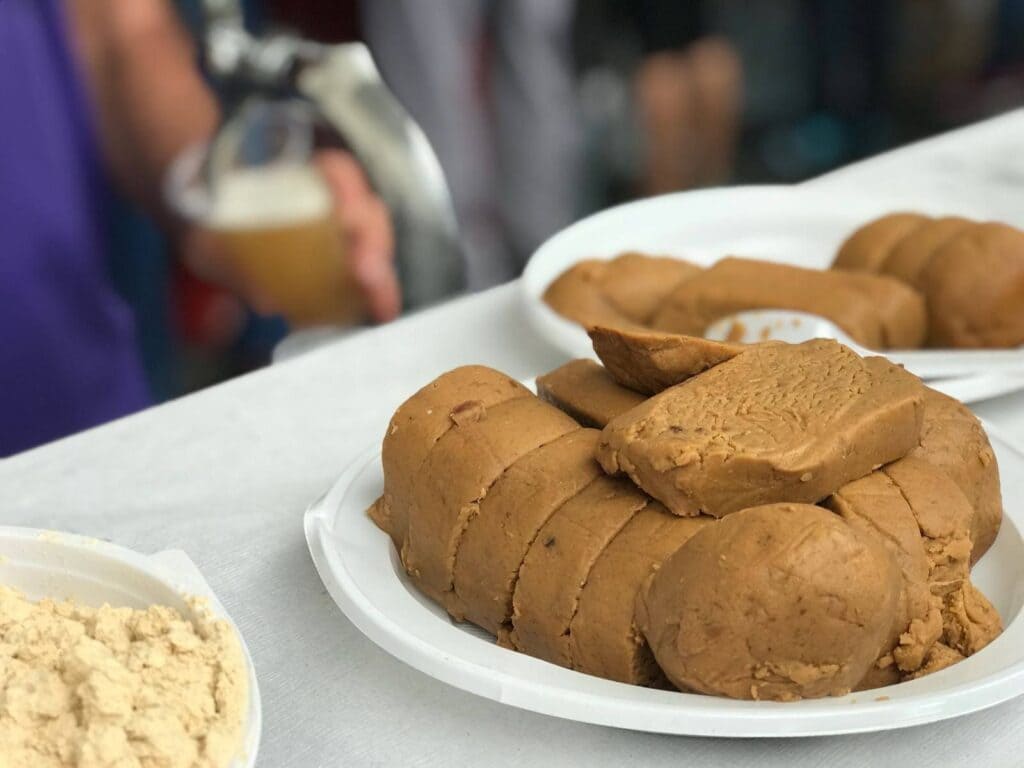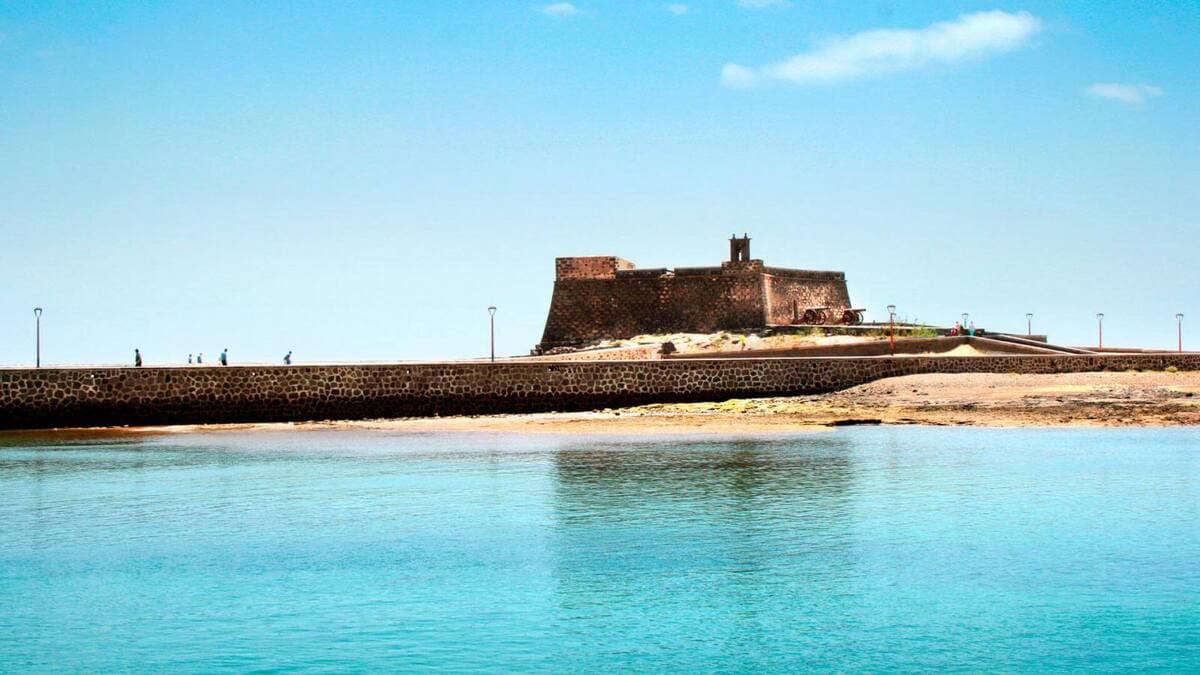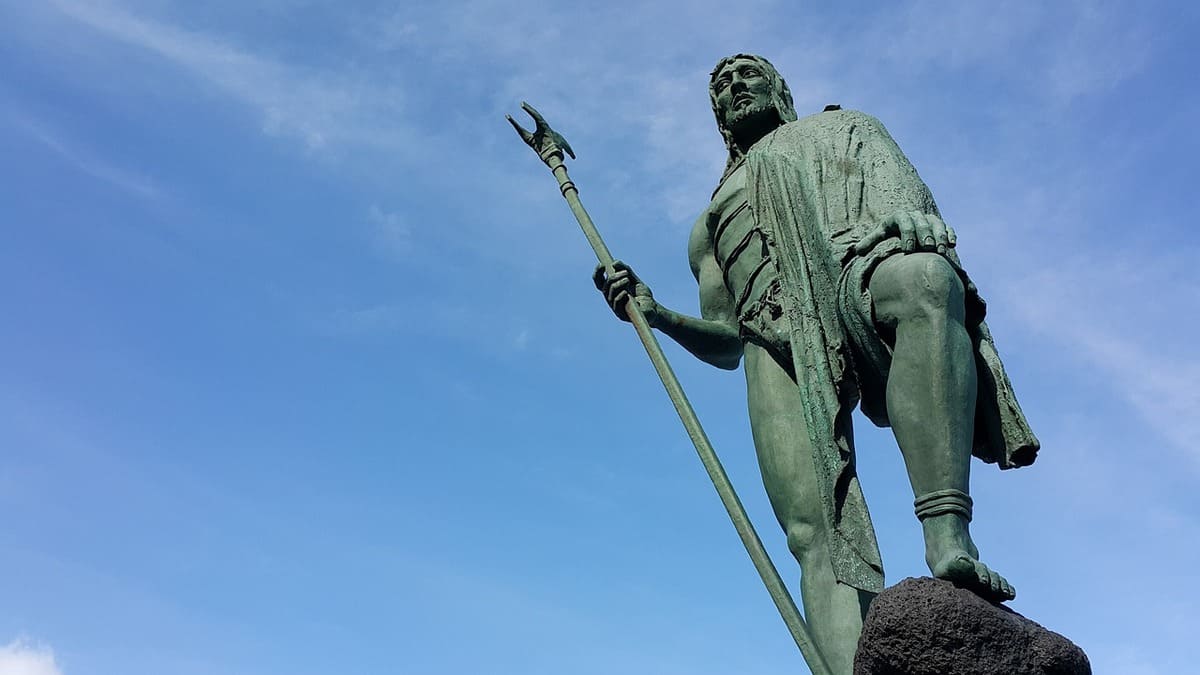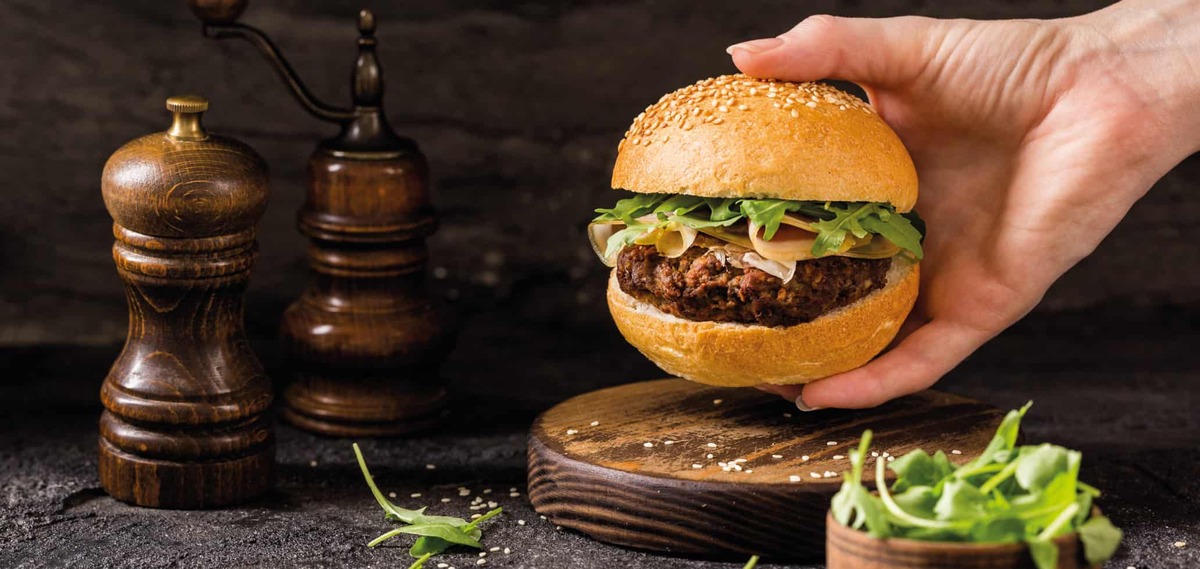Garrote wrestling is a traditional sport of the archipelago. It comes from the fighting practices used by the aboriginal shepherds of the Canary Islands. To perform this fight, it is necessary to use a club.
The garrote is a wooden stick or stick, which gives the name to this fight, which was used in this case for combat, but also for moving around the countryside, this technique is known as the shepherd's leap, which we will talk about in more detail in this article. In the same way, the club was also used to guide and manage livestock.
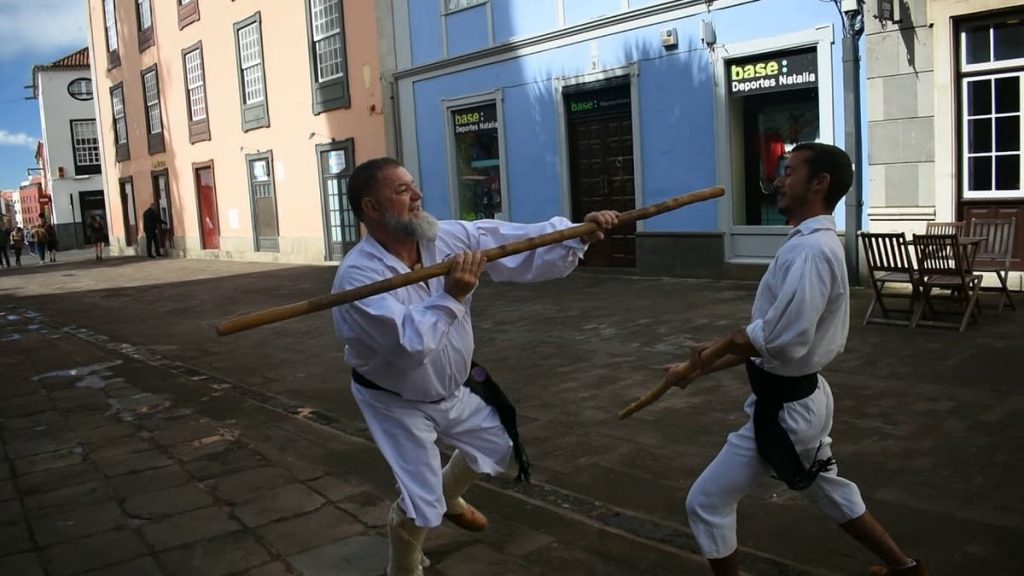
Today, garrote wrestling is a traditional sport in the archipelago and is practised in Gran Canaria, Tenerife, La Palma and, especially, in El Hierro.
History of the garrote fight
The first Canarian shepherds were strong people with a great knowledge of the geography of their island. They always carried a club, of a size similar to that of the bearer himself, which helped them to move along slopes, hillsides and ravines, as well as to handle the livestock that accompanied them.
In general, they herded independently. The fact that they were on their own meant that they often ended up in disputes with other shepherds. These fights could be over the use of the land or over a piece of the other' s livestock, among other reasons.
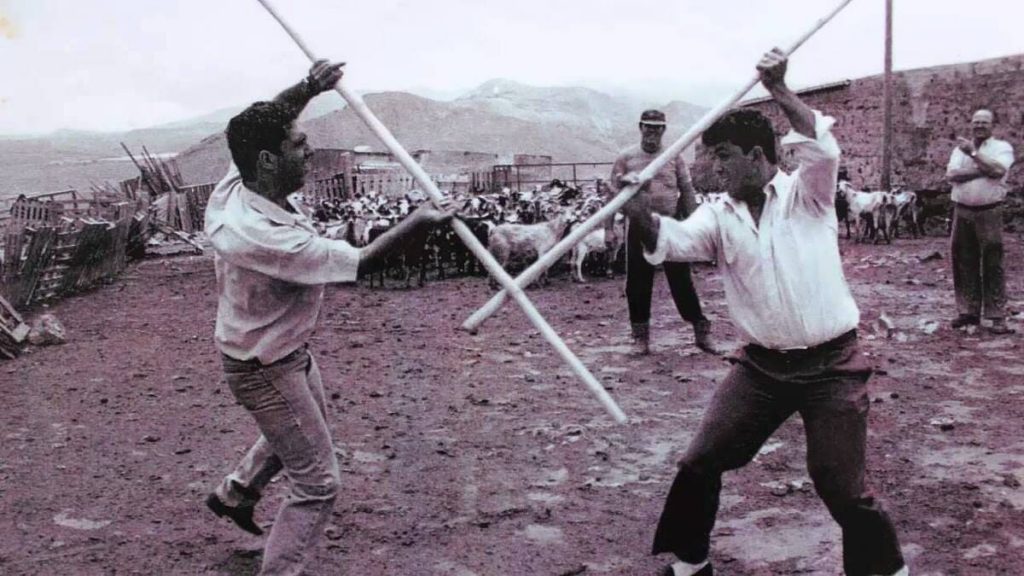
Of course, the garrote also came to be used as a weapon of defence against foreign enemies. After the conquest of the Canary Islands, the aborigines were forbidden to use and possess weapons, but the shepherds kept the garrote, as it was easy to camouflage as a simple stick to help with herding. In addition, with the passage of time, a metal tip called a puyón or regatónwas added to the garrote.
Due to the isolated nature of the shepherds, it was possible to preserve this traditional form of wrestling in a clandestine manner. From 1940 onwards, due to the abandonment of rural areas, some of the practices and skills of thiswrestling began to decline, as happened with other traditional Canarian sports. But in 1970, Master Jorge Domínguez carried out an exhaustive investigation based on interviews with shepherds on the island of Gran Canaria and managed to compile a large part of the lost techniques.
Description of the fight and the club
In the garrote fight, the aim is to defeat the opponent from a face-to-face position and with the garrote as a weapon and shield at the same time. The ends, punta and regatón, are used to defend and attack and the central part, burra, as protection. These movements are known as braceo and mudar las manos. In addition to these techniques, we must also add the trabas and zapatas with which we try to knock down the opponent.
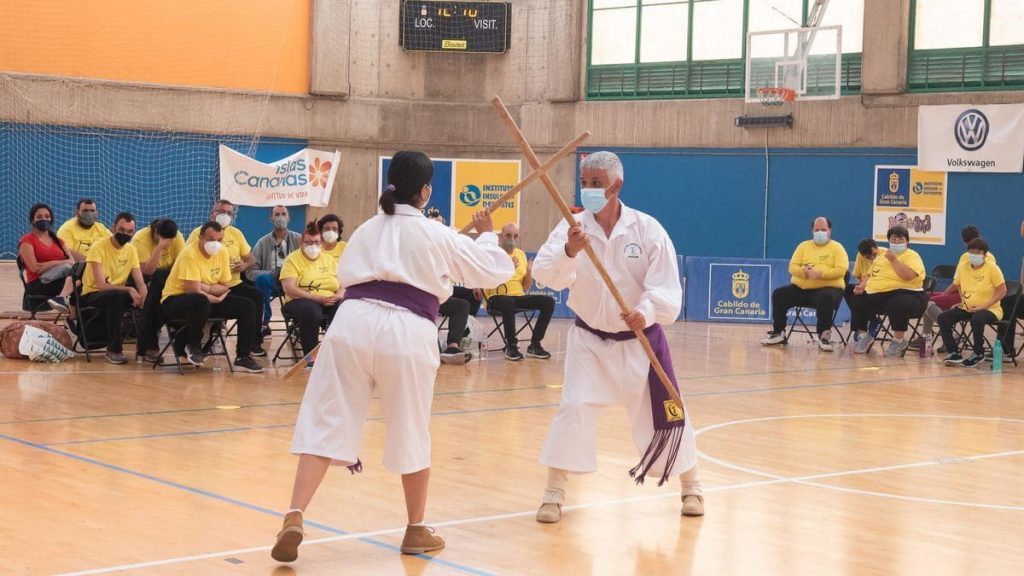
The garrote is called by many names depending on the island where the fight takes place (palo, lata, asta, astia, vara, lanza, regatón, vera). It can also be divided into three groups according to its size. On the one hand, the short stick, normally up to the shoulder; the medium stick, the size of the bearer; and the long stick, a quarter above the height of the garrotista.
With regard to the materials used for the manufacture of the club, the first ones were made using common woods from local trees. The most commonly used woods were those from: quince, almond, plum, palm, barbusano, palo blanco, acebuche and Canary Island pine.
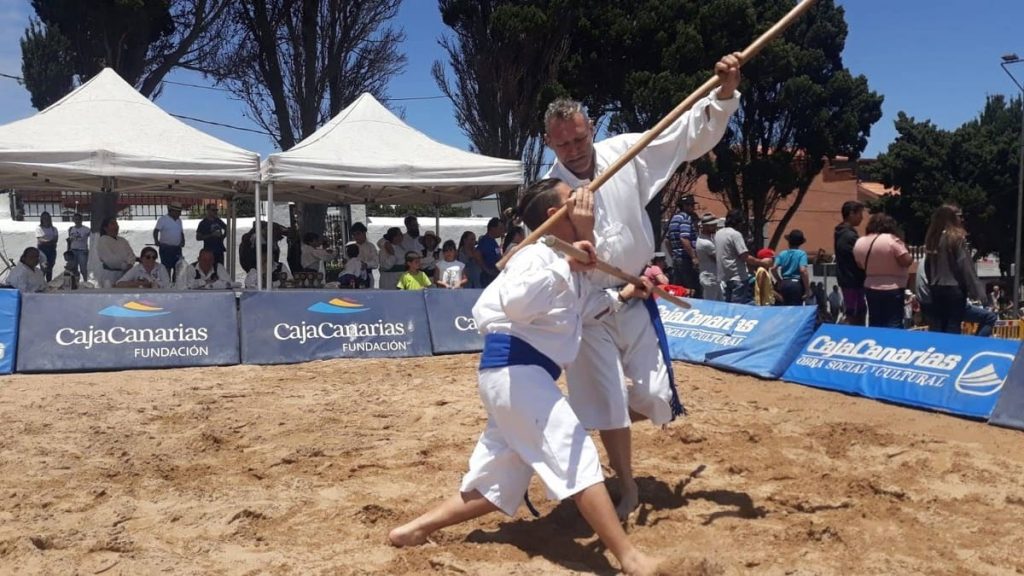
The club fighting groups are known as "pilas" and are distinguished from each other by the colour of the athletes' sashes and club ends. Referees, masters and judges wear black. The hierarchy is based on triangular pints. When a pupil reaches seven pints, he moves up to a higher grade and can wear the black sash.
There are two types of sporting competition. On the one hand, Traditional Techniques in Exhibition, where you can participate in pairs or in groups and the judges value different aspects such as technical richness and rhythm. On the other hand, the Traditional Techniques in Combat, a modality in which the clubs are adapted and contact is accepted. In the absolute combats or garroteadas, there is no difference between men and women.
If you are interested in Canarian traditions and sports, here is another similar article: El palo canario, an ancestral vestige of the archipelago, Lucha Canaria, the most popular sport on the islands .
Paula Vera
Photos: youtube.com, federacionluchadelgarrotecanario.blogspot.com
